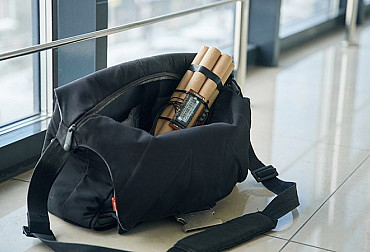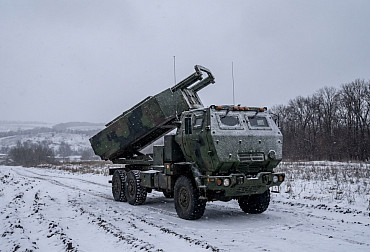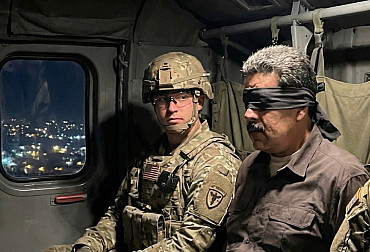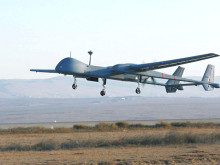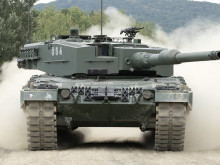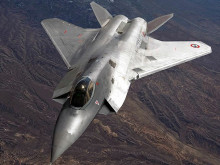Modernisation of the Slovak Land Forces – the situation is improving, but some projects have still not been implemented
The modernisation of military equipment and the purchase of new, modern weapon systems is currently a hot topic throughout Europe, Slovakia not excluded. To begin with, it should be noted that the Armed Forces of the Slovak Republic (AF SR) have been underfunded for many years, and this is of course reflected in their equipment. The biggest deficit is particularly evident in the Slovak Armed Forces Ground Forces. No major modernisation projects have been implemented in this component of the Slovak army for more than two decades after the establishment of the independent state. Although the situation has improved over the last few years, there are still large gaps in the Slovak Land Forces and many projects are still unrealised.
Purchases of modern military equipment are currently among the top topics of many European countries. The reason for the great interest in new weapon systems obviously stems from the current dynamics of the security situation in Europe, but it is not the only factor. Of course, the modernisation of armed forces across Europe is also influenced by technological progress and the need to replace obsolete systems that are no longer in production or are costly to maintain. The building of armed forces for the 21st century theatre of war is currently underway in Slovakia. Over the past few years, the leadership of the Ministry of Defence has been trying to catch up with more than 20 years of disinterest in building military capabilities and capacities for the modern battlefield. The biggest gaps are visible especially in the equipment of the Slovak Armed Forces Ground Forces.
Before we look at the yet unimplemented, albeit important, modernisation projects within the Slovak Armed Forces, it is necessary to briefly describe the achievements that have been made in recent years in the field of modernisation of the ground forces. In 2018, it was possible to purchase 25 Zuzana 2 self-propelled wheeled howitzers (3 batteries of eight howitzers + one howitzer for training) for the Land Forces of the Slovak Armed Forces. The contract for the Zuzana 2 howitzers was signed by the then Minister of Defence Peter Gajdoš for EUR 175 million. Even five years after the signing of the contract, not all of the ordered howitzers are in the arsenal of Slovak artillerymen due to the Covid-19 pandemic and the support of Ukraine (16 are currently in the arsenal), it is important that the ground forces will not lose their new howitzers. Deliveries should be completed by summer 2024.
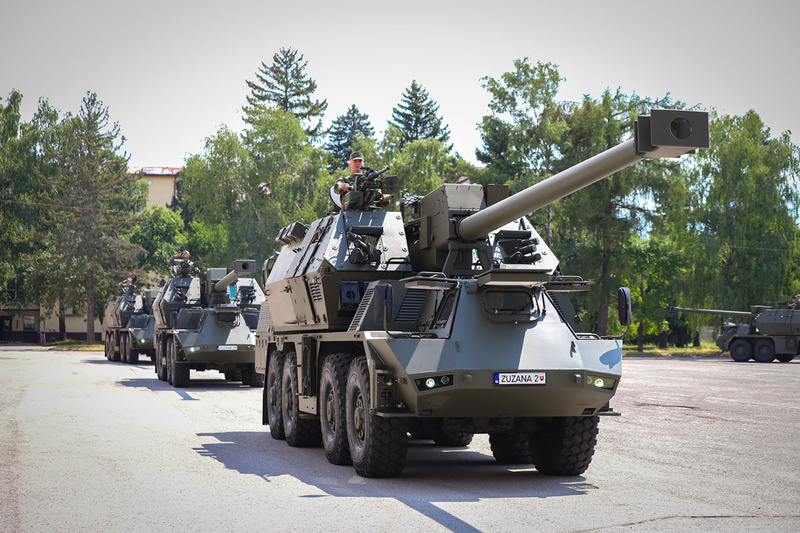 Picture: Slovak Zuzana 2 howitzers | Ministry of Defence of the Slovak Republic
Picture: Slovak Zuzana 2 howitzers | Ministry of Defence of the Slovak Republic
In addition to the remaining howitzers, the ground forces of the Slovak Armed Forces can also look forward to new 8x8 Patria AMVXP armoured fighting vehicles and CV90MkIV tracked IFV. The contracts for the new tracked and wheeled equipment were signed by the Slovak Ministry of Defence last year. In August 2022, Defence Minister Jaroslav Nad and his Finnish ministerial counterpart Antti Kaikkonen signed an intergovernmental agreement for the purchase of 76 Patria AMVXP 8x8 vehicles worth €447 million. Subsequently, in December last year, an intergovernmental agreement was also signed for the acquisition of CV90MkIV tracked infantry fighting vehicles from Swedish manufacturer BAE Systems. The total cost of the purchase of 152 CV90MkIV tracked armoured personnel carriers with 35 millimetre guns is around €1.688 billion. The first Patria is due to be delivered to Slovakia in September this year, with the first CV90s to be delivered in 2026.
There is still a lot of catching up to do
Although the above-mentioned military equipment acquisitions are a significant step forward, many projects that are important for the Slovak Land Forces have not been implemented to date. This is particularly the case for main battle tanks, trucks and 4x4 multi-purpose tactical vehicles. A key project for achieving the NATO commitment to build a heavy mechanised brigade by 2026 is the acquisition of new tanks. Currently, the Slovak Armed Forces have 30 T-72M1 tanks in their arsenal; according to the Slovak Armed Forces as of 2019, 100% of these tanks are beyond their service life.
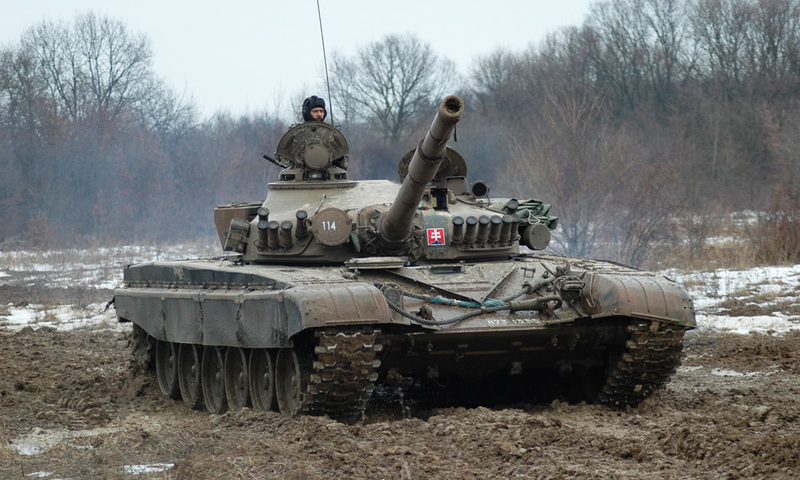 Picture: Currently, the Slovak Armed Forces have 30 T-72M1 tanks in their arsenal; according to the Slovak Armed Forces as of 2019, 100% of these tanks are beyond their service life. | Ministry of Defence of the Slovak Republic
Picture: Currently, the Slovak Armed Forces have 30 T-72M1 tanks in their arsenal; according to the Slovak Armed Forces as of 2019, 100% of these tanks are beyond their service life. | Ministry of Defence of the Slovak Republic
The situation has partially improved thanks to an agreement between Slovakia and Germany, under which Slovakia will receive 15 Leopard 2A4 tanks by the end of this year as compensation for 30 BVP-1 vehicles donated to Ukraine. Slovakia took delivery of its first Leopard 2A4 tank at the end of last year. With the tanks from Germany, Slovakia will approach the size of a NATO tank battalion, but only in terms of quantity. From a qualitative point of view, the T-72 tanks do not reach the required parameters of modern armaments and therefore these tanks need to be replaced as soon as possible with new systems in accordance with NATO standards. In an interview with the Postoj daily in January 2022, the Slovak Defence Minister stated that although a new tank would be suitable for Slovakia, he did not see room for their purchase in the current electoral period. Thus, tanks will remain one of the tasks for the new defence minister, who will be known after the September snap parliamentary elections, and should become a priority in armaments. After all, the acquisition of new tanks after 2026 is also envisaged in the Ministry of Defence's Long-Term Development Plan with a view to 2035. Tanks, as demonstrated by the ongoing fighting in Ukraine, are still an important element of the European battlefield, and Slovakia should not deprive itself of this capability. However, it needs to act quickly, as the growing demand for tanks and the lack of tank production lines may significantly delay their purchase.
Another project that the current leadership of the Ministry of Defence wanted to implement, but according to the latest information the project will wait for a new minister, is the purchase of new trucks. Army logistics and logistics in general were much discussed at the beginning of the massive Russian invasion of Ukraine, mainly because of the problems Russia had with logistics. Military logistics is a complex area that is related to both the production capacity of a given state and the distribution of military material to combat zones. While defence production capacities fall under the strategic level, the operational and tactical level aims to accumulate military material in logistics centres and then create supply routes towards the front lines. The movement of military material at the tactical and operational levels can only be realised if the army has sufficient logistics and cargo vehicles and assets. At present, the Ground Forces, and it can be said that the Slovak Armed Forces in general, are equipped mainly with Praga V3S vehicles, which started to be produced 70 years ago. Undoubtedly, these are iconic vehicles that successfully fulfilled their tasks in their time, but nowadays there are problems with their maintenance due to the lack of spare parts. The Ministry of Defence started a market survey for new trucks in 2021, with a competition to be announced by the end of 2022 and the winner by the end of the year. However, according to current information, the project will not be completed in the current shortened term.
In connection with the Capability Goals 2017, the Ministry of Defence under the previous Minister of Defence Petr Gajdos wanted to purchase 404 multi-purpose tactical vehicles. The material submitted by the MoD leadership in 2017 envisages the purchase of these vehicles for the needs of mechanised battalions, motorised battalion, artillery battalion, ISTAR battalion and other units. However, in 2019, the Slovak Public Procurement Office (SPO) recommended cancelling the purchase of the vehicles due to suspicions that the parameters of the tender were set in favour of the Zetor Gerlach. At the suggestion of Defence Minister Jaroslav Naď in May 2020, the Slovak government cancelled the project. The new tender announcement is certainly worth at least considering, as 4x4 multi-purpose tactical vehicles are suitable assets for deployment in both offensive and defensive operations of lower intensity, as well as in special operations. At the same time, the 5th Artillery Regiment is being built within the Land Forces of the Slovak Armed Forces, which will need vehicles for artillery reconnaissance.
Whoever becomes the new Minister of Defence needs to continue the efforts of the last two Ministers of Defence and focus on the modernisation of the Slovak Land Forces. As we can see, the ground forces still play an important role in the European theatre of war and it is therefore necessary to maintain their capabilities at a high level. At the same time, the SR Ground Forces have long suffered from underfunding, and if we are talking about national interests today, it is impossible to neglect the needs of the armed forces.











